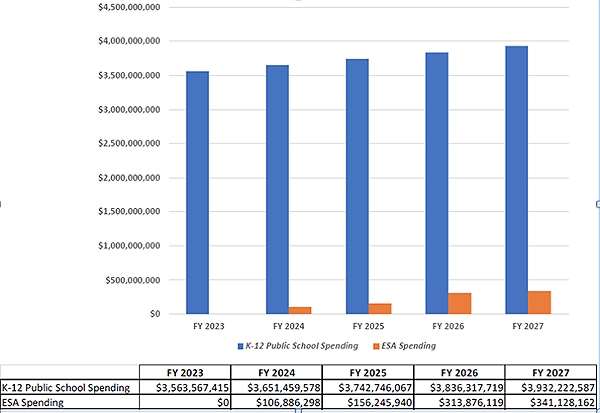The Thompson Times

This week’s newsletter is going to address the Students First bill. (HSB1).
After the Governor’s speech on January 10th my priority was to get the information to each of 56th District’s six superintendents. The summary sheet was sent the following morning to the superintendents with the request to review the bill and to send feedback. I’ve received responses from nearly all of them. I’ve received many comments on this bill, both for and against from throughout the district. I am weighing all of them, irrespective of any particular elected official who has promoted HSB1. My views are based on my own experience as a parent in the education of our own children, and the concerns of many other parents and educators.
This bill makes some changes to the way we count students and results in additional funding being allocated to the public school. Currently, when a student leaves a public school for private school the state no longer counts that student anymore and the public school receives no funds. Under this new proposal, students who attend private school will still be counted in the public school’s total and the public school will continue to receive $1,205 per student who attends a private school. Moreover, the State allocation of $7598 will be paid to the school district for one year after the student leaves to allow for more effective budgeting for the next school year.
Also new in this year’s proposal is increased flexibility for how school districts can spend their money. Right now, the State earmarks school districts’ budgets for specific programs and some of those dollars go unspent. This bill will allow school districts to use these unspent funds for broader educational requirements, including increasing teachers’ salaries.
District 56 has ONE private school, St. Mary’s in Humboldt K thru 6. The school only has space for a handful of new students. The principal has indicated there is already a working relationship with the public-school system to meet the needs of a few students with special needs they enroll presently. About 30% are diverse ethnic background. There are a couple of other private schools close enough to District 56 that may draw students outside the district. I have reached out to the closest private school outside the district. It also has socio-economic diversity. Neither school is categorized as geared only for the “elite” but made up of parents seeking options to educate their child(ren).
Presently, 56.7% of our taxes go to education ($3.6 Billion/year). 45.7% goes to K-12. 10.7% goes to our three state universities.
Each school receives between $17,000 – 19,000 per student per year, combining federal, state and local funding
After being a substitute teacher in Clarion-Goldfield-Dows school district I observed teachers and administration with care and concern for their students. With the high quality of education there, I cannot envision a mass exodus, nor would I presume an exodus would occur in the other five schools in a rural area such as ours. It is projected (based on other state’s data) that about 2% of students leave public for private once universal school choice is implemented. This school choice proposal is NOT an attack on the dedicated teachers in our public schools. It IS about every family’s individual choice, public or non-public unfettered by income.
.If enacted, the legislation calls for the parents to annually apply for the funds that would have been allocated to the public school had their child attended there. The Department of Education (DOE), through a third party will decide if that request is approved. The third party distributing the funds will be determined by the DOE, with oversight from the legislature.
Public dollars have been used for non-public education for many years, i.e.- Iowa Tuition Grant, Pell Grants, GI Bill, preschool. (in the 1970’s, I applied for and was provided an Iowa Tuition Grant when I transferred to Buena Vista University, a non-public college.) Just as we have choice in higher education, this bill seeks to do the same for K-12.
Parents are their children’s first educators and are the ultimate decision makers regarding their education. Many families want the same values taught at home, church, and school.
One’s income does not dictate the opportunity for anyone to attend public school. Neither should income dictate the choice for parents to select a non-public option.
The non-public schools with ESA students MUST be certified by the state. Private schools also have several annual reporting requirements such as (but not limited to):
•Enrollment numbers
•Number of males and females
•Ethnicity
•English language learners
•Accreditation requirements
The graph projects the cost to both implement ESA (orange) and what will be spent for public education for the next four years.
I agree that we should support public schools and increase opportunities for children. I also believe that parents should be empowered as they seek the best education for their child. The proposal does not take money from any school that does not lose a student. It just provides that if the parents choose ESA, some of the money goes with them. Large urban schools stand to lose the most students.
I believe parents should be the ones directing their child's education and will support some form ESA legislation.
Category:
The Leader
Mid-America Publishing
This newspaper is part of the Mid-America Publishing Family. Please visit www.midampublishing.com for more information.
